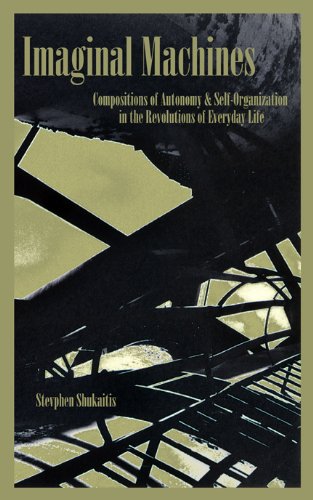Stephen Johnstone (ed.): The Everyday (2008)
Filed under book | Tags: · art, art criticism, contemporary art, everyday

“Numerous international exhibitions and biennales have born witness to the range of contemporary art engaged with the everyday and its antecedents in Dada and Surrealism, Pop, Situationism and Fluxus. Art’s turn to the ordinary is symptomatic of a desire to address things in the world, rather than the history and institutions of art. It shows a recognition of ordinary dignity or the accidentally miraculous; an engagement with a new kind of anthropology; an immersion in the pleasures of popular culture; or a meditation on what happens, when nothing happens. The celebration of the everyday has oppositional and dissident overtones, offering a voice to the silenced and proposing possibilities for change. This collection of writings by artists, theorists and critics assembles for the first time a comprehensive anthology on the everyday in the world of contemporary art.”
Publisher Whitechapel, 2008
Documents of Contemporary Art series
ISBN 0262600749, 9780262600743
239 pages
PDF (updated on 2012-7-15)
Comment (1)Stevphen Shukaitis: Imaginal Machines: Autonomy & Self-Organization in the Revolutions of Everyday Life (2009)
Filed under book | Tags: · avant-garde, everyday, left, life, machine, philosophy, politics, revolution, social movements

“All power to the imagination? Over the past forty years to invoke the imagination as a basis for radical politics has become a cliché: a rhetorical utilization of ideas already in circulation, invoking the mythic unfolding of this self-institutionalizing process. But what exactly is radical imagination? Drawing from autonomist politics, class composition analysis, and avant-garde arts, Imaginal Machines explores the emergence, functioning, and constant breakdown of the embodied forms of radical imagination.
What does it mean to invoke the power of the imagination when it seems that the imagination has already seized power through the power of the spectacle? Does any subversive potentiality remain? Perhaps it is only honest to think in terms of a temporally-bounded subversive power. It might be that imaginal machines only work by breaking down. That is, their functioning is only possible, paradoxically, by their malfunctioning. By reopening the question of recuperation, the inevitable drive to integrate the power of social insurgency back into the working of capital and the state, we create possibilities for a politics continually reconstituted against and through the dynamics of recuperation: to keep open an antagonism without closure.”
Publisher Minor Compositions, London/NYC/Port Watson, 2009
ISBN 1570272085, 9781570272080
255 pages
PDF (updated on 2016-2-21)
EPUB (added on 2016-2-21)
ARG (added on 2016-2-21)
Scribd
Nikos Papastergiadis: Spatial Aesthetics: Art, Place and the Everyday (2006/2010)
Filed under book | Tags: · art, art history, contemporary art, everyday, life

This book examines the most recent shifts in contemporary art practice. By working with artists and closely observing the way in which they relate to urban space and engage other people, locally and globally, Nikos Papastergiadis provides a critical account of the transformation of art and public culture. He shows art has sought to democratise the big issues of our time and utilize new information technologies. While the concept of the everyday highlights the potential for transformation at the level of the individual, at the same time it has to be seen as a critique of broader structures; in this book Papastergiadis stresses the importance of situating a work within art history as well as relating it to its social context. Spatial Aesthetics will help artists, curators and cultural workers think about the ways they intervene in public life. Challenging recent declarations in the art world that theory is obsolete, it seeks to show how art uses ideas, and how everyone can be involved in the ideas of politics and art.
Originally published by Rivers Oram Press, 2006.
Publisher: Institute of Network Cultures, Amsterdam 2010
Theory on Demand series, No. 5
Creative Commons Attribution Noncommercial No Derivative Works 3.0 Netherlands License
ISBN 9789081602136
135 pages
PDF (updated on 2012-9-3)
Comment (0)
